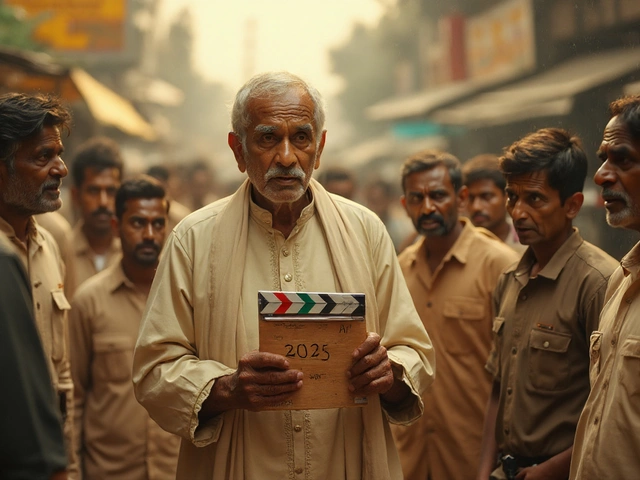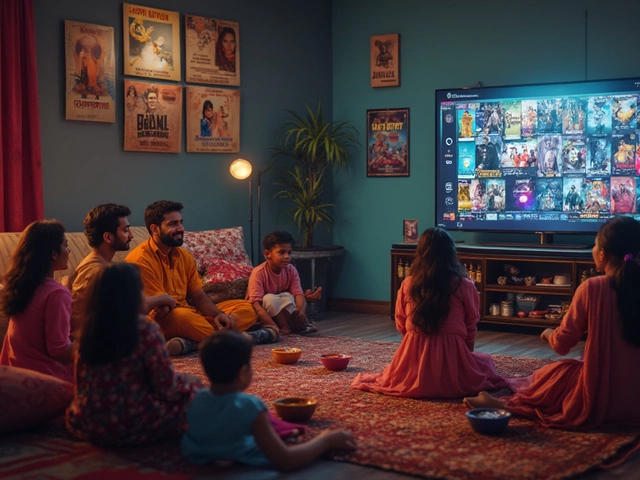
No star likes the word flop. But does anyone truly have zero? Across full careers, the answer is almost always no. The trick lies in how you define “flop,” which market you track, and whether you’re counting leads only or every credit. If you want the quick version: a long, mainstream career with 0 flops is a unicorn.
TL;DR
- No modern mainstream star qualifies as a zero flop actor for an entire career; film risk makes that almost impossible.
- “Flop” varies by trade source and territory. Always align your definition before counting.
- Rare exceptions exist for tiny filmographies (e.g., 3-5 films) where none flopped-think James Dean.
- Some stars have long no-flop streaks in certain years or markets (Aamir Khan’s mid-2000s-2010s run; Shah Rukh Khan’s 2023 surge).
- Use trade databases (Box Office India, Box Office Mojo, The Numbers, Sacnilk) and a consistent ROI rule to verify.
Zero-flop actor is a colloquial label for a performer whose entire released filmography shows no box-office flops under commonly used trade definitions in their home market.
What exactly is a “flop”?
Flop (box office) is a release that fails to recover its cost (production + a realistic share of P&A) from theatrical revenues, typically measured via distributor share and territory-wise rentals. Trade portals often mark such titles as “Flop,” “Disaster,” or “Loss.”
Different analysts slice this differently. In India, some trackers look at net domestic (after tax) and distributor share. Globally, you’ll see worldwide gross vs. reported budget, sometimes with a multiplier (2-2.5x budget) to cover marketing and exhibitor cuts. That’s why the same film can be “average” per one portal and “flop” per another.
Box Office India is a trade-tracking portal widely cited for Hindi film verdicts (Hit, Super Hit, Average, Flop) using Indian theatrical metrics and historical benchmarks. pairs with Sacnilk an India-based box-office data provider publishing daily grosses, verdicts, and territory splits for Indian films across languages. For global numbers, people cross-check Box Office Mojo a global gross database that tracks worldwide totals, domestic/overseas splits, and rankings for Hollywood and international films. and The Numbers a film business dataset listing grosses, budgets, and revenue models for theatrical and ancillary markets.
Rule of thumb for quick checks: if worldwide gross is less than ~2x the production budget for a wide Hollywood release, odds are the film lost money theatrically. In India, trade verdicts rely more on distributor share and territory costs. Always match method to market.
So, who has 0 flops? The honest answer
Across a full, decades-long career as a lead? Almost nobody. Even the biggest names-once you tally every lead credit, every experimental project, and poor release windows-have some flops.
Aamir Khan is an Indian actor-producer (active since 1988) known for selective releases and record-setting hits like Dangal (2016, ~₹2,000+ crore worldwide). He has one of the highest average grosses per film across Hindi cinema but also early-career underperformers. He had a famous run from Rang De Basanti (2006) to Dangal (2016) where virtually everything worked theatrically. But a lifelong 0-flop label doesn’t hold if you include the 1990s and experimental titles.
Shah Rukh Khan is an Indian actor-producer (active since 1992) who delivered a dominant 2023-Pathaan (~₹1,050+ crore WW) and Jawan (~₹1,160+ crore WW)-after a long career containing both mega-hits and underperformers. A spectacular year can refresh a track record, but it doesn’t erase earlier flops.
Down south, legends like Rajinikanth a Tamil cinema icon with 160+ films, famed for massive openings and long-run crowd pull, including Jailer (2023, ~₹600+ crore WW). carry huge fanbases and many blockbusters, yet even they’ve had titles that didn’t fully recover costs across territories.
In Hollywood, Tom Cruise is an American actor-producer with 40+ lead films, known for the Mission: Impossible franchise and Top Gun: Maverick (2022, ~$1.49B WW). Despite massive hits, he has occasional underperformers (e.g., franchise starts that didn’t stick). And Leonardo DiCaprio is an American actor whose selective filmography leans prestige and strong legs (e.g., Inception, The Wolf of Wall Street), but some titles underperformed relative to costs. The larger the career, the harder a perfect record becomes.
The rare “perfect” filmography: tiny sample sizes
The closest thing to a real answer is a star with a tiny set of released films-all successful. The classic example is James Dean an American actor (1931-1955) with only three released feature films-East of Eden (1955), Rebel Without a Cause (1955), and Giant (1956)-each regarded as culturally significant and successful for their time. With three entries, he effectively had 0 flops.
Modern debuts sometimes manage a short “perfect” streak (3-5 films), especially if they choose scripts carefully or benefit from strong franchises. But as the filmography grows-different genres, changing audience tastes, market shifts-some misses are statistically inevitable.
India focus: why the “0 flop” claim keeps coming back
Indian cinema tracks verdicts intensely. Fans tally “Hits vs Flops” for their favorite stars and post lists from popular trade sources to claim supremacy. But the claim depends on what’s counted.
- Lead-only vs. all acting credits: Cameos and ensemble parts can cloud verdicts.
- Market: Hindi vs. Tamil vs. Telugu vs. Malayalam; each uses slightly different cost structures and verdict logic.
- Time windows: A star may have a spotless 5-8 year run yet still have flops across the whole career.
Names that often emerge in “low-flop” conversations include N. T. Rama Rao Jr. a Telugu cinema star propelled globally by RRR (2022) while earlier career phases include mixed verdicts in the Telugu market., Allu Arjun a Telugu star whose Pushpa: The Rise (2021) sparked pan-India momentum ahead of the sequel’s wide anticipation., and long-running icons like Rajinikanth. Their hit ratios in certain eras are phenomenal. But even for them, “0 flops forever” doesn’t stand the microscope when you include early years and riskier picks.
For verdict credibility, analysts also watch Ormax Media an Indian media analytics firm tracking audience sentiment, star rankings, and brand lift-useful context for interpreting box-office potential and post-release legs.
How to verify an actor’s flop count (the clean method)
- Define “flop” first. Use one market and one yardstick. For Hindi films, adopt a single trade source’s verdicts (e.g., Box Office India or Sacnilk). For Hollywood, stick to a budget multiple (e.g., 2x for break-even) using Box Office Mojo/The Numbers.
- List lead-role films only (unless you want every acting credit). Note dual-hero films separately.
- Adjust for inflation if you’re comparing across decades, or better, rely on the portal’s verdict (they usually already normalize to era realities).
- Be clear about overseas. A film can underperform domestically but recover costs overseas-or vice versa.
- Check re-release or long-run effects. Some titles move from loss to breakeven after delayed legs, tax incentives, or satellite/streaming deals. If you want pure theatrical, lock it before ancillaries.
Quick heuristic: Hit Ratio = Hits ÷ (Hits + Averages + Flops). If you’re strict, remove “Average” from the numerator. For cross-market stars, compute ratios per market first, then weight by number of releases.
Comparison: stars often cited in low-flop debates (estimates, not verdicts)
| Actor | Approx. lead films | Era active | Signature mega-hit(s) | Any flops across career? | Notes on method |
|---|---|---|---|---|---|
| Aamir Khan | 45+ | 1988-2025 | Dangal (~₹2,000+ cr WW), PK | Yes (esp. early career) | High hit ratio during 2006-2016; method: Hindi trade verdicts |
| Shah Rukh Khan | 60+ | 1992-2025 | Pathaan, Jawan (both 2023) | Yes | Career includes underperformers; stellar 2023 run |
| Rajinikanth | 160+ | 1975-2025 | Jailer (~₹600+ cr WW) | Yes | Mass peaks with intermittent misses; Tamil market specifics |
| Tom Cruise | 40+ | 1981-2025 | Top Gun: Maverick ($1.49B) | Yes | Franchise tentpoles offset smaller underperformers |
| Leonardo DiCaprio | 25+ | 1991-2025 | Inception, The Wolf of Wall Street | Likely | Prestige-heavy slate; some titles soft vs. cost |
| N. T. Rama Rao Jr. | 30+ | 2001-2025 | RRR (2022) | Yes | Telugu trade verdicts: mixed earlier years |
| Allu Arjun | 25+ | 2003-2025 | Pushpa: The Rise | Yes | Strong recent phase; earlier variance typical |
| James Dean | 3 | 1955-1956 | Rebel Without a Cause, Giant | No (among 3 released) | Tiny filmography; special case |
Note: Counts vary by source and inclusion rules. This table sketches the “spirit” of the debate, not a legal verdict slate. Always reconcile with one chosen data source and definition.
Why the “0 flop” label breaks in the real world
- Portfolio risk: Big stars experiment with genres, debut directors, or passion projects. Some won’t clear costs.
- Market shocks: Pandemics, competition, or date shifts can sink even good films.
- Budget creep: If costs outpace realistic demand, even strong openings can’t save the math.
- Territory spread: A film can be a hit in one language/region and still be a flop after all territories settle.
- Changing tastes: What worked in 2009 may not land in 2025.

Case studies: streaks, not lifetimes
Aamir Khan ran an extraordinary mid-2000s to mid-2010s stretch where practically every release became a hit or better-helped by sparse output, top-tier scripts, and family appeal. The fewer the releases, the easier it is to keep the bar high. One misfire won’t break a ratio, but it breaks “0 flops” fast.
Shah Rukh Khan’s 2023 is a textbook rebound: two giant blockbusters that repositioned the brand overnight. But if you zoom out to the 1990s-2010s, you’ll find a normal distribution: some classics, some mid-performers, and a few misses. That’s what a long career looks like.
Tom Cruise shows how franchises absorb risk. Mission: Impossible and Top Gun anchor the portfolio. Outside those, a few starts underperform. Still, the brand power from a couple of monster hits can carry the averages.
Related concepts to nail before you argue online
Bollywood colloquial label for Hindi-language film industry centered in Mumbai. is just one slice of Indian cinema. Tamil (Kollywood industry shorthand for Tamil-language cinema, largely based in Chennai.) and Telugu (Tollywood (Telugu cinema) industry shorthand for Telugu-language cinema produced in Telangana and Andhra Pradesh.) markets have their own cost accounting and verdict culture. Pulling data across them requires care.
- Hit vs. Super Hit vs. Blockbuster: These are thresholds based on returns, not just absolute gross.
- Star pull vs. content legs: Openings show fan power; weekday holds show content power.
- Holiday corridors: Diwali, Eid, Christmas weekends inflate openings and shift expectations.
- Ancillaries: Streaming, satellite, and music can rescue a theatrical “loss,” but purists prefer theatrical-only verdicts.
Short answers to the original question
If you’re asking “Which actor has 0 flop movies?” here’s the straight talk:
- Lifetime, long career: Almost none. Every major star has at least a few flops when you apply one consistent trade definition.
- Small filmography (3-5 films): Yes, a few-James Dean is the clearest classic example.
- Era-bounded streaks: Many. Aamir Khan (2006-2016), Shah Rukh Khan (2023), several South Indian stars across hot phases.
How to do your own audit (DIY template)
- Pick a star and list only lead roles, with year and market.
- Choose a single source for verdicts (e.g., Box Office India for Hindi) and stick to it.
- Mark verdicts: Hit, Super Hit, Blockbuster, Average, Below Average, Flop.
- Compute: Flop Count; Hit Ratio = Hits / Total; Big-Hit Count (Super Hit + Blockbuster).
- Stress test: Change source and see how counts move. If the label flips, your definition is too loose.
Edge cases you’ll run into
- Multi-hero films: Split credit or count fully? Choose once and stay consistent.
- Delay and tax waivers: Older Indian films can have complex settlement stories; trust consolidated trade verdicts.
- Language dubs vs. originals: Count by original language release and its cost base.
- Re-releases and director’s cuts: Usually don’t change initial theatrical verdicts.
Connected topics worth exploring next
- How trade verdicts are set in India vs. Hollywood.
- Holiday-release strategy and price elasticity of opening weekends.
- How streaming pre-buys distort theatrical risk.
- Star rankings (per Ormax Media) vs. real ticket sales-where they align and where they don’t.
Frequently Asked Questions
Is there any Indian actor with 0 flop movies across their whole career?
Across a full, decades-long career, effectively no. Even the top Hindi and South Indian stars have a few titles marked Flop or Below Average by at least one credible trade source. What you can find are long no-flop streaks in specific windows (e.g., Aamir Khan, 2006-2016) or recent purple patches (e.g., Shah Rukh Khan in 2023). If someone claims “0 flops,” ask which source and which films they excluded.
Does James Dean really have zero flops?
Among his three released features-East of Eden, Rebel Without a Cause, and Giant-none is considered a flop in historical context. That’s a function of a tiny filmography. With only three entries, the odds of a clean slate are far better than for stars with dozens of releases over multiple decades.
Which data sources should I trust for flop counts?
For Hindi cinema, Box Office India and Sacnilk are commonly cited. For global/US releases, Box Office Mojo and The Numbers are standard. Use one consistent source per market. For sentiment and star rankings (not verdicts), Ormax Media provides context. Mixing sources mid-calculation is the fastest way to get misleading answers.
How do trade portals decide a “Flop” vs. “Average” vs. “Hit”?
They compare realized theatrical revenues (often via distributor share) to cost bases (production plus a marketing allowance) for a given territory. A Hit typically clears comfortable margins; Average is near break-even; Flop is a loss. Each portal has internal thresholds and may weigh overseas differently, which is why verdicts sometimes differ.
Do streaming rights remove a flop tag?
If you’re judging pure theatrical, no. A film can still be a theatrical flop even if streaming and satellite deals pull it to net profit later. Trade verdicts usually refer to theatrical performance in the core market first, then consider ancillaries separately.
Are South Indian stars less prone to flops than Bollywood stars?
Not inherently. Tamil and Telugu markets have strong star systems and loyal fanbases, which can deliver big openings. But verdicts still depend on cost, word of mouth, and holds. Every major South star has phases of dominance and phases with misses. The math is the math in each territory.
Do ensemble films count when judging an actor’s flop record?
Only if you include them by rule. Many fan lists use lead-only credits to avoid shared attribution problems. If you include ensembles, create a consistent approach (e.g., count as full credit, half credit, or list separately) and disclose your method so comparisons stay fair.
Why do flop counts for the same actor differ across websites?
Different portals use different baselines-some emphasize Indian net vs. gross, others emphasize distributor share; some fold in overseas sooner; some adjust for inflation differently. Also, budget figures can be estimates. Decide your primary portal per market and stick with it to avoid apples-to-oranges comparisons.
What’s a good hit ratio for a top star?
For long careers, anything north of ~40-50% Hits (using your chosen source) is elite. Add in a few Super Hits/Blockbusters and the star’s brand stays bulletproof, even with some flops. A 0-flop lifetime is not the target; a strong average and consistent big wins are.
Next steps: pick your persona
- For fans: Build a clean list of your star’s lead films and annotate verdicts using one portal. Share the method with your claim.
- For students: Compare two stars across the same era and market. Visualize hit ratios and average opening day vs. lifetime multipliers.
- For analysts: Add budget trajectories and marketing intensity to map when rising costs start to hurt ROI despite stable openings.
Bottom line: if the question is “Which actor has 0 flop movies?” the fair, data-backed reply is-over a full career, practically none. Celebrate streaks, measure ratios, and keep the rulebook consistent.





Write a comment